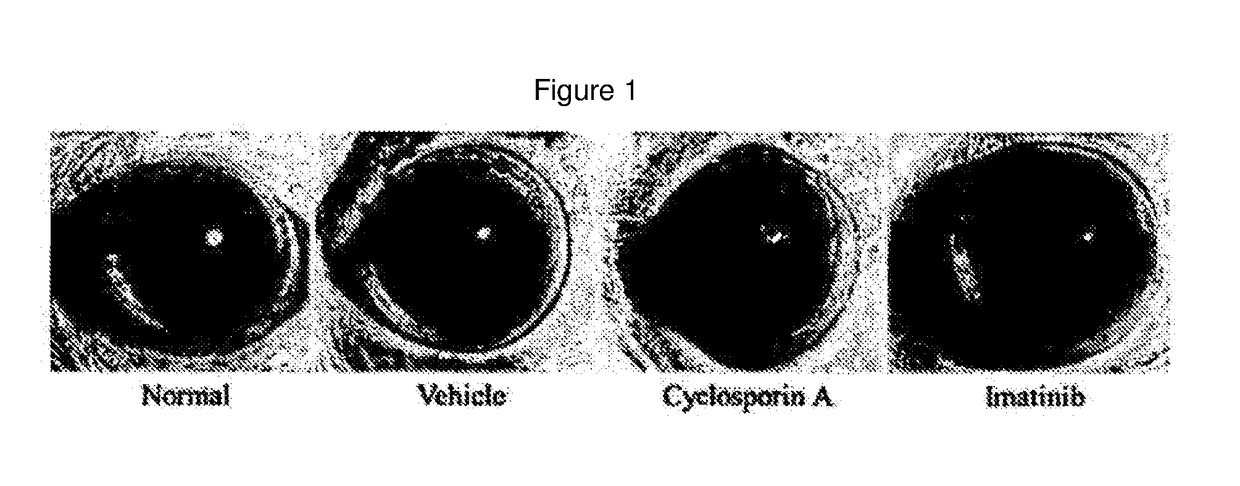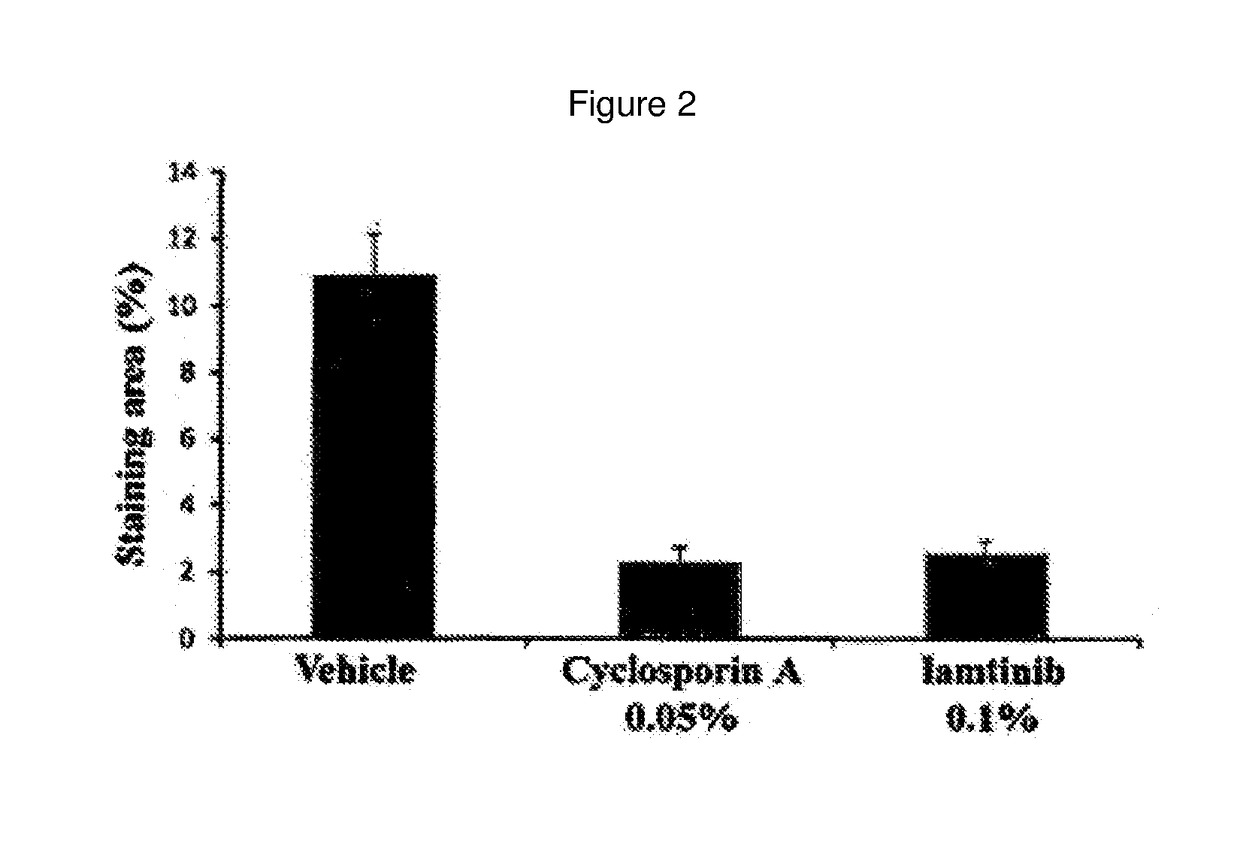Pharmaceutical composition for preventing and treating dry eye diseases, containing imatinib as active ingredient
a technology of imatinib and active ingredient, applied in the direction of drug compositions, pharmaceutical delivery mechanisms, medical preparations, etc., can solve the problems of visual impairment or blindness of eyes, reducing the quality of life, corneal epithelium, etc., and achieves the effect of effectively protecting the corneal epithelium and inhibiting corneal degeneration
- Summary
- Abstract
- Description
- Claims
- Application Information
AI Technical Summary
Benefits of technology
Problems solved by technology
Method used
Image
Examples
example 2
[0064]Corneal Degeneration Protection Effect of Imatinib Eye Drop in Keratoconjunctivitis Sicca Model
[0065]An experiment for keratoconjunctivitis sicca was carried out using the same dry eye animal model as that constructed in Example 1. White SD rats were used as an animal, and keratoconjunctivitis sicca was induced by administering 1% atropine sulfate and 0.1% benzalkonium chloride dropwise to an eye twice a day for 2 weeks.
[0066]An imatinib eye drop (0.1 mg / ml) was administered dropwise to an eye twice a day for 1 week after 7 days of administration of 1% atropine sulfate and 0.1% benzalkonium chloride. A 0.05% Cyclosporin A eye drop was used as a reference drug.
[0067]In order to observe corneal degeneration in the keratoconjunctivitis sicca (dry eye) model, F-actin staining was performed. F-actin was stained with phalloidin labeled with a fluorescent material. Keratinization of corneal epithelial cells was observed in a vehicle not administered a drug (white arrow head), while c...
example 3
[0068]Effect of Imatinib Eye Drop in Inhibiting Invasion of Specific Inflammatory Cells in Keratoconjunctivitis Sicca
[0069]An experiment was carried out using the same administration method as that used in the animal model of Example 1, and then an inflammation inhibitory effect of imatinib on specific inflammatory cells invaded into the cornea was identified.
[0070]To identify inflammatory cells in the cornea in keratoconjunctivitis sicca (dry eye), the eye was cryosectioned, and inflammatory cells having an antigen of LSP-1 were stained and observed (See FIG. 5). Inflammation-associated cells such as lymphocytes, neutrophils, and macrophages have LSP-1 can be observed after being immunostained using an LSP-1 antibody. Inflammatory cells were observed by 0.61±0.05 in a control (a drug-non-treated group) and by 0.52±0.05 in an imatinib eye drop (0.1%) (See FIG. 6). As a result of the inflammatory cell staining experiment, it was confirmed that the imatinib eye drop (0.1%) had an infl...
PUM
| Property | Measurement | Unit |
|---|---|---|
| Composition | aaaaa | aaaaa |
| Content | aaaaa | aaaaa |
Abstract
Description
Claims
Application Information
 Login to View More
Login to View More - R&D
- Intellectual Property
- Life Sciences
- Materials
- Tech Scout
- Unparalleled Data Quality
- Higher Quality Content
- 60% Fewer Hallucinations
Browse by: Latest US Patents, China's latest patents, Technical Efficacy Thesaurus, Application Domain, Technology Topic, Popular Technical Reports.
© 2025 PatSnap. All rights reserved.Legal|Privacy policy|Modern Slavery Act Transparency Statement|Sitemap|About US| Contact US: help@patsnap.com



